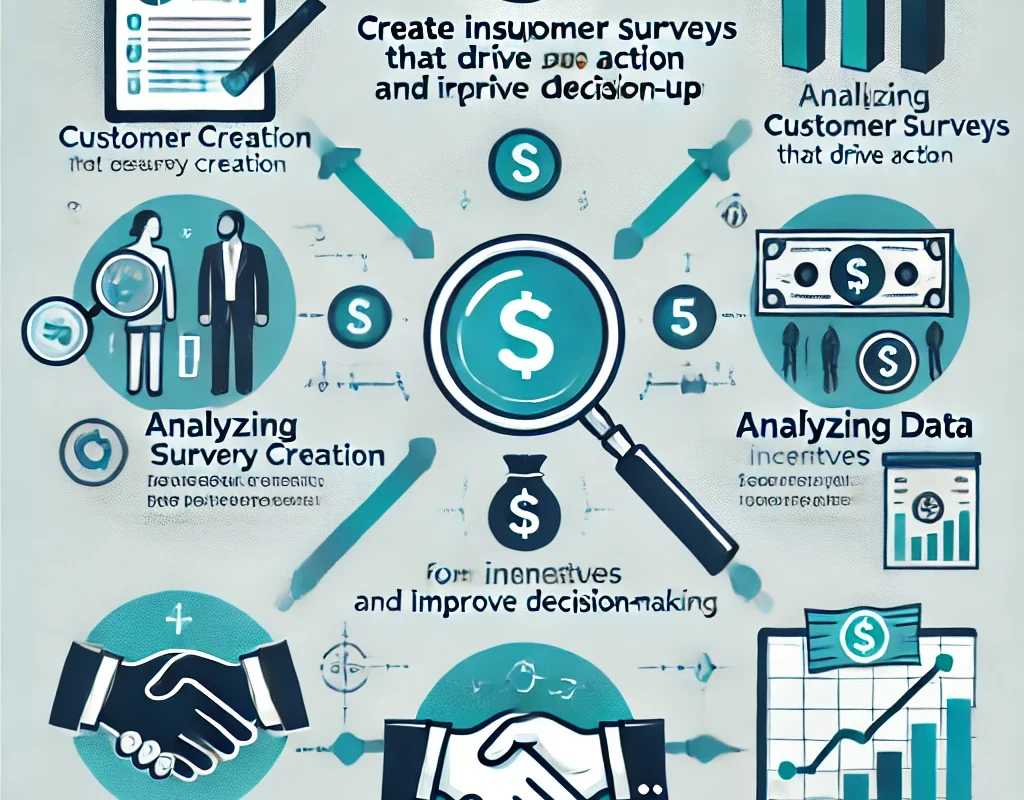Customer surveys are a powerful tool for businesses aiming to gather critical feedback, improve product offerings, and optimize customer satisfaction. But creating surveys that truly drive action involves more than just asking random questions. It requires thoughtful planning, execution, and follow-up strategies that reveal actionable insights. Let’s explore the five essential steps to design customer surveys that lead to meaningful improvements in your business.
Asking your customers for feedback can be invaluable in understanding their needs, preferences, and pain points. However, not all surveys yield the information necessary to take decisive action. Too often, businesses craft lengthy or irrelevant surveys that overwhelm respondents or fail to provide any real insight. To avoid this, you need to take a strategic approach when designing your customer surveys.
In this guide, we’ll walk you through five key steps to create insightful customer surveys that not only engage your audience but also provide valuable data to drive business improvements. Whether you’re seeking feedback on a product, service, or overall customer experience, these steps will ensure your surveys deliver actionable results.
Step 1: Define Clear Objectives for Your Customer Surveys
Before diving into survey creation, it’s crucial to establish clear goals for what you want to achieve. Without a defined purpose, your survey may end up scattered or ineffective, leading to irrelevant data and a waste of both your time and your customers’ efforts.
Ask yourself:
- What specific information do you need from your customers?
- How will this feedback be used in decision-making processes?
- What business areas—such as product development, customer service, or marketing—are you looking to improve?
For instance, if you’re launching a new product, your objective might be to understand customer satisfaction with its features. On the other hand, if you’re revamping your customer service, you’ll want to learn more about the pain points your customers experience during support interactions. Once you set clear objectives, every survey question should align with these goals, ensuring you receive targeted, actionable data.
Step 2: Keep the Survey Questions Relevant and Concise
A major pitfall for many surveys is including too many irrelevant questions. Customers are more likely to complete a survey if it’s short, focused, and to the point. Lengthy surveys can lead to incomplete responses or survey abandonment, skewing your data and wasting resources.
Here are some best practices to consider:
- Ask direct questions: Focus on what matters most and avoid vague or multi-layered questions.
- Use a mix of question types: Include both open-ended questions for qualitative insights and multiple-choice or rating-scale questions for quantifiable data.
- Avoid leading questions: These can bias the respondent’s answer and may distort your results.
For example, instead of asking, “What do you like about our product?” (which presumes they like it), ask, “How satisfied are you with our product?” This neutral phrasing will provide more honest feedback. Additionally, using skip logic can help ensure that customers only see questions relevant to their experience, keeping the survey streamlined and user-friendly.
Step 3: Offer Incentives to Increase Participation
One of the most effective ways to boost survey completion rates is by offering customers an incentive to participate. The key is to provide a reward that is meaningful enough to motivate, without introducing bias into the responses.
Consider these types of incentives:
- Discounts or coupons: Offering a percentage off a future purchase or a coupon for completing the survey.
- Exclusive content or access: Sharing exclusive resources, such as a white paper, report, or early access to new features or products.
- Entry into a prize draw: Some businesses incentivize feedback by offering a chance to win a high-value product or gift card.
However, it’s important to communicate the incentive clearly while assuring participants that their responses will remain unbiased. Avoid framing the incentive as a direct trade for positive feedback, as this can undermine the survey’s credibility and the value of the insights gained.
Step 4: Analyze the Data to Extract Actionable Insights
Collecting responses is just the beginning. The real value of a customer survey comes from analyzing the data in a way that reveals actionable insights. This is where you can begin to identify patterns, trends, and opportunities that can lead to concrete improvements in your business.
Steps for effective data analysis include:
- Segmenting your audience: Break down responses by customer demographics, behaviors, or any other relevant factor. This will help you see which groups are more satisfied or dissatisfied, and why.
- Identifying recurring themes: In open-ended responses, look for common themes or phrases that indicate larger trends. Tools like word clouds or text analysis software can help identify these patterns.
- Comparing quantitative responses: With questions on a scale or multiple-choice, calculate averages or distribution percentages to assess general satisfaction levels or preferences.
For example, if your survey reveals that a significant number of customers are dissatisfied with your customer service response time, this insight can prompt actionable changes—such as increasing staffing or improving your support ticketing system.
Step 5: Follow Up with Customers and Take Visible Action
To close the feedback loop and maximize the value of your survey, it’s essential to follow up with respondents and take action based on their insights. Customers appreciate knowing that their feedback was heard, and that it will influence real change. This not only builds trust but also encourages continued engagement.
Consider the following actions after reviewing survey data:
- Communicate results: Share the survey findings with your customers, highlighting key insights and thanking them for their participation.
- Outline next steps: Explain how you plan to address the feedback. Whether it’s updating a product feature, refining customer service, or launching a new initiative, customers should know how their input is driving action.
- Engage further: For customers who provided critical feedback, consider reaching out for deeper discussions or offering them a chance to test new solutions based on their input.
Taking visible action shows customers that their opinions matter and will lead to continuous improvement, fostering loyalty and long-term relationships.
You Can Also Read : What Are the Best Tools for Gaining Actionable Market Insights?
Creating insightful customer surveys that drive action is an ongoing process that requires careful planning, execution, and follow-up. By defining clear objectives, crafting focused questions, offering appropriate incentives, analyzing the data for actionable insights, and closing the feedback loop, businesses can use customer surveys as a critical tool for improvement and growth.
When done correctly, customer surveys are more than just a way to gather opinions—they are a direct line to understanding customer needs and driving meaningful action. Whether you’re seeking to enhance a product, service, or overall customer experience, these five steps will ensure your surveys lead to valuable, actionable outcomes.



